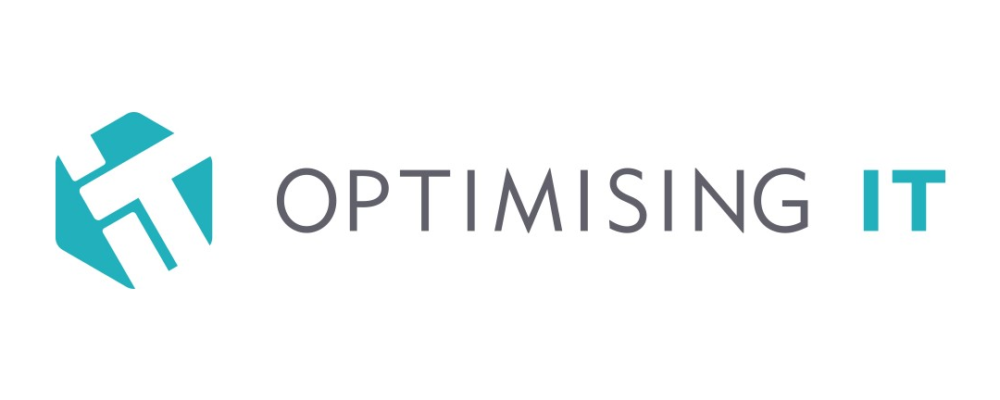To-do lists for project managers can be pretty intimidating at times. In any given week, it can include needed deliverables on various tasks. These may consist of implementing a complex change at scale, improving the network, upgrading cyber security systems, and setting up new hardware – and all must be done alongside routine day-to-day services. Falling behind would be disastrous if – God forbid – something like a catastrophic failure happened somewhere in your IT system.
That’s why falling behind isn’t an option. Project managers need a detailed plan and strict adherence to proven processes to juggle it all. We know at Optimising IT because we have provided managed IT services with project management and delivery for several years – even winning awards and accreditation as a Crown Commercial Service Provider for our efforts. And whether your business is situated in the automotive, hospitality, legal services, recruitment, retail, financial services, or any other industry, the challenges are fundamentally the same.
At the heart of what we do is IT consultancy. Another challenge to add to your long list of projects is if disruptions, outages, and faulty installations should dissuade you from doing things like upgrades at all. Many in-house IT support teams are not fully qualified to handle installation, integration, upgrade, and change tasks, and we come in to provide that service for them. Whether our clients need IT support in Gloucestershire, Bristol, or Gloucester, IT consultancy from Optimising IT can take immense pressure off their shoulders. This is especially true when they need solutions to project management through our IT consultancy – which this article will outline.
So don’t let multiple projects intimidate you or their complexity bog down your productivity. The UK’s most accomplished IT support provider is here to tell you exactly how to manage them efficiently and effectively. No matter what industry your business is in or if you’re struggling with IT support in Gloucestershire or elsewhere in England, there are seven strategies you should focus on to get the deliverables your company needs. We’ll break it down in an easily understood manner in this guide.
You Must First Plan Ahead
Beginning with a plan sounds obvious, but it can be a daunting task. If you don’t subscribe to managed IT services from an IT support provider like Optimising IT, it’s easy for things to get shuffled around to lose track of prioritised tasks. You will also become quickly overwhelmed when something out of your control occurs – a time when we receive a lot of inquiries to our IT consultancy service. It cannot be stressed enough that things will go wrong at some point, and eliminating as much chance in the mix as possible is the overarching theme of a successful project plan.
Your project plan should have multiple contingencies for when things go awry. To do that, you must be able to visualise your project on the individual level and as a whole. Priority tasks should get the bulk of your attention, and knowing how to delegate will help accomplish functions on the periphery. This is harder if you are a small business with limited resources and team members. When visualising your project from beginning to end, it’s a good idea to be honest with yourself in deciding if it’s reasonable that you and your team can do it all alone or if it’s time to seek out managed IT services for help.
Assuming you do have adequate in-house IT support in Gloucestershire or Gloucester, or wherever you’re located, creating a detailed project plan also gets everyone together into the same mindset. Everyone knows what’s expected of them without ambiguity drives more engagement and productivity. Purpose and direction are critical to completing multiple projects on time and within budget.
Here is a template to follow for creating a project plan that will carry you and your team to success:
- Write out the scope and metrics of your project
- Identify everyone and their roles
- Detail the sought-after deliverables
- Outline the tasks
- Assign all of those tasks and set deadlines
- Develop methods of communication for sharing, for feedback, and make adjustments when/where necessary
- Build off of the successes of past projects and incorporate what worked into your current project plan
- Ensure that every member of the team is engaged
It is imperative to incorporate breaks for you and your team members into your project plan – especially if there are multiple projects. When there is a lot of stress and a heavy workload, it’s necessary to take a step back and catch your breath from time to time.
Utilise Project Management Tools
New technologies emerge seemingly every day, and many are highly useful for managing IT projects. You should stay up to date with the latest innovations and be implementing them wherever possible to help with the workload.
Business cloud services from an IT support provider can significantly bless you and your team. With a service contract, you only pay for what services you want and don’t have to waste any of your investment on superfluities. Suppose your business works with the government or is in the public sector. In that case, you will find services and applications from vendors in the G-Cloud – the Digital Marketplace has thousands of them developed specifically for project management. The competition in the G-Cloud keeps costs low and promotes innovations.
There are many choices in project management software that can help you assign tasks, turn them in, and track their progress and the productivity of your team. All of it is done with the push of a button and is designed to keep everything organised and reduce hassles.
Prioritise And Delegate
Prioritising tasks is critical when you are handling multiple projects at once. As a project manager, it is your job to know which tasks have the most significant impact on the business and devote more time and resources to completing them accordingly. Functions with a smaller effect should be grouped whenever possible to alleviate the overall burden.
Assuming you have an in-house IT support team in Gloucestershire, Gloucester, Bristol, or wherever you operate, delegating tasks they can handle. At the same time, your focus on what’s been prioritised is just as important. Delegating is an essential tool for every manager. Not only does it allow tasks to be done quicker, but it also has several benefits for the growth and development of the employees under you. Team members gain valuable experience and much-needed confidence-boosting when given more responsibility. Project managers also learn more about their team and individual strengths and weaknesses.
Review And Make Adjustments
Good project managers know one to be firm and when to be flexible. Sometimes tasks and processes need adjusting, especially when unforeseen circumstances happen. Managing multiple projects simultaneously requires constant reviews and feedback from all team members. It’s too easy for pertinent information to waste when different departments and individuals aren’t in constant communication. Make sure there are regular meetings or channels where data is aggregated and shared. Project managers should keep an eye on all reports and change the plan when necessary.
There Are Five Phases To Project Management
Breaking down a methodology to manage individual tasks gives you more efficiency in completing the whole. When you devised your project plan, you aimed to eliminate unpredictability as much as possible. You prioritised tasks and made adjustments where needed. You also outline contingencies in case the unexpected happens. All of these steps help ensure deliverables are met on time. But you can achieve even more predictability by applying another framework.
There is a system for this established by the Project Management Institute in their Project Management Body of Knowledge (the PMBOK Guide). It’s a valuable tool for project managers to assess, plan, and execute multiple tasks. The lifecycle of your project is broken down into five stages: initiation, planning, execution, monitoring, and closure.
Initiation
The first stage is the project’s initiation. In this stage, you lay out your goals – typically a working product, change, upgrade, installation, etc. There are always problems in business, and the ones your IT support in Gloucestershire can solve proceed from an abstract idea into actionable deliverables. Once you have a business case and an outline of what the project entails, you can move to create a project charter.
Not only are the goals you want to achieve are listed in the project charter, but also are the challenges and constraints, how many resources are needed to achieve them, and how long it will take. The charter identifies stakeholders, their roles and responsibilities and establishes a plan for reviews and communication along the project life cycle.
Planning
You begin to lay out the more technical details of your project in the planning stage. In addition to setting up a project schedule of when tasks are worked, breaks are taken, etc., the planning stage delves further into establishing communication plans and setting up goals from the initiation stage.
If you utilise Managed IT services or IT consultancy from an outsourced IT support provider, you can limit the time the planning stage requires. Otherwise, planning will take up roughly half the entire life cycle of the project. This is necessary as you cannot expect quality results unless all details are hashed out and set up beforehand.
The project manager will visualise the entire project from beginning to end and how they and the team perform each function. Risks are mitigated with detailed contingency plans, and potential bottlenecks are addressed with adjustments that can be made anytime during the project’s life cycle.
Execution
The execution stage is when all of the work begins. Every member of your team and IT support in Gloucestershire knows the plan and begins the tasks assigned to them. Reviews and feedback are given through the established communication channels, and any hiccups are remedied with adjustments to the plan.
You can make this stage easier with project management tools from an IT support provider – especially for collaboration. Keeping your team on the same page during the execution stage is critical for project success.
Project Monitoring
The fourth stage of the life cycle is monitoring and controlling the project. It runs in concert with the execution stage. KPIs (Key Performance Indicators) are commonly used to track the progress and productivity of all stakeholders. The project manager must also keep track of the resources being spent to ensure the tasks remain worthwhile to the business and that the budget is not being exceeded.
Project Closure
Once the project has been completed and delivered, there are typically more reviews for team members, contracts to be terminated, and other duties that the project manager usually handles. This is also the stage where you set up the success of future projects by making a report and storing the data away to be drawn from when needed.
Look Into IT Project Management Providers
Managing multiple IT projects simultaneously is an enormous task. One of the best measures you can take might be to look into outsourcing much of the workload to an external IT support provider. Managed IT services offer all the resources needed for successful delivery, including the project manager, highly skilled engineers, procurement, and the tools necessary to maximise efficiency and productivity.
Managed IT services focusing on project management first, become acquainted with your business’s goals and aspirations before creating tailored solutions and executing them. Companies without in-house IT support staff gain one when they hire the right IT support provider. Regardless of their infrastructure, IT consultancy is always available to alleviate the pressures of complex projects – especially when many of them are vying for attention.
Many businesses in the UK turn to Optimising IT for managed IT services and as an IT support provider for one-off services. In many cases, we’re also more cost-effective for project management and delivery than going alone. Find out more about what we can do for you in this area of management services at Optimising IT.













